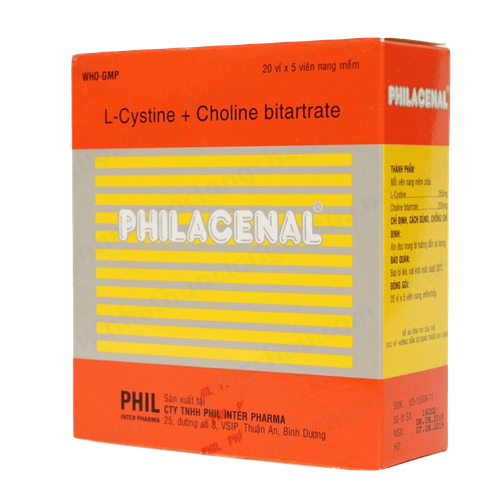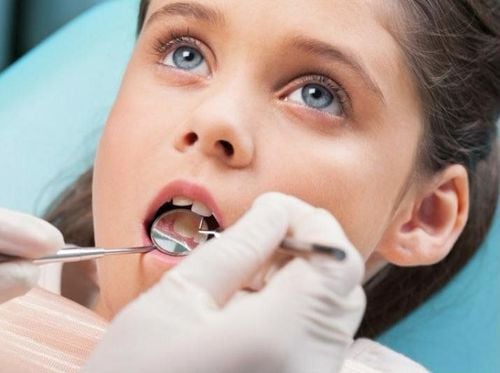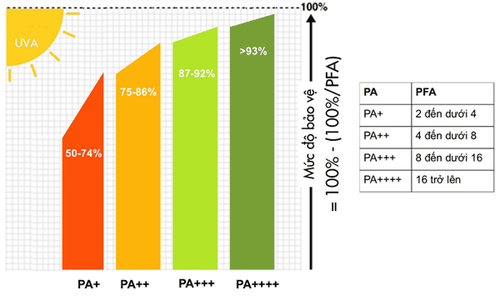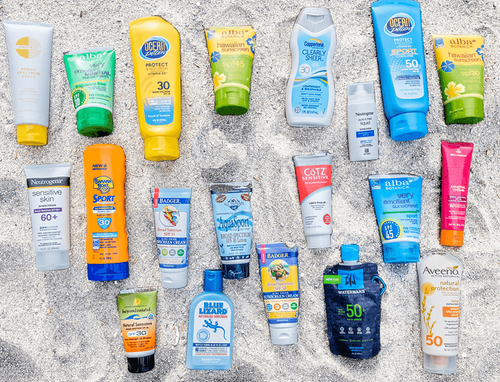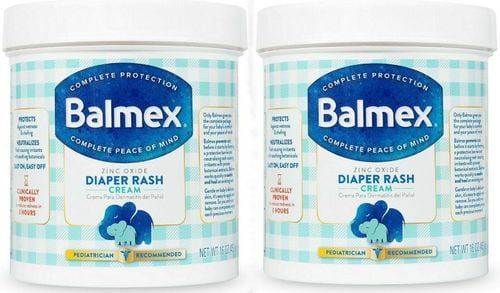This is an automatically translated article.
Freckles are brown or light brown spots on the skin, made up of clusters of skin cells that contain the pigment melanin. Sun exposure triggers melanocytes to produce more melanin. Some ways to remove freckles are using sunscreen, laser treatment, surgery,...1. How do freckles appear?
Freckles are brown or light brown spots on the skin, made up of clusters of skin cells that contain the pigment melanin. Unlike raised moles, freckles are flat and not painful or harmful. This is actually an accumulation of melanin in the outer layer of the skin and can be inherited.Skin contains cells called melanocytes that produce the pigment melanin. Melanin helps protect the skin from the harmful UV rays of the sun. When exposed to the sun will trigger the melanocytes to produce more melanin. Most people with lots of freckles have fair skin, although anyone can get it. Because people with fair skin usually produce less melanin than people with dark skin, but when exposed to the sun these melanocytes will produce more melanin.
SEE ALSO: Q&A: What are the treatments for freckles?
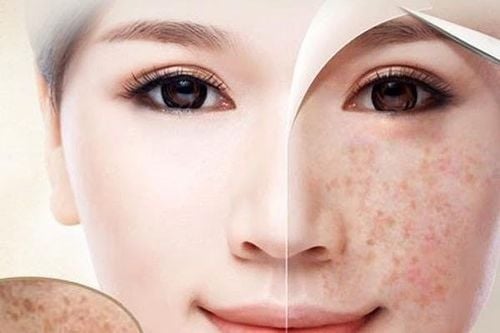
Nguyên nhân bị tàn nhang có thể do bẩm sinh hoặc tiếp xúc thường xuyên với ánh nắng mặt trời
2. How to get rid of freckles
Freckles often appear more in summer due to sun exposure and may fade in winter. Freckles caused by sun damage often tend to increase with age. Therefore, to fade freckles, there should be remedies including:
2.1 Sunscreen
Sunscreen won't get rid of existing freckles, but it will help prevent new ones from appearing. Therefore, you should apply sunscreen all year round even when it is cloudy. Experts recommend using sunscreen as follows:
Use sunscreen with SPF 30 or higher. Apply sunscreen to your skin at least 15 minutes before going out in the sun. Reapply sunscreen every two hours and immediately after swimming or sweating heavily.
2.2 Laser treatment
Laser treatment uses focused, intense pulses of light to target damaged areas of skin. There are different types of lasers, according to a 2015 study the 1064 Q-Switched Nd YAG laser is effective in treating freckles. Study results showed that this laser treatment lightened freckles by 50% in 62% of participants.
Laser treatment is generally safe and the risk of scarring is low. However, other side effects that may occur include:
Itching Swelling, redness Infection Changes in skin color If you have a history of oral herpes your doctor will prescribe antiviral medication first. during laser treatment. Because lasers can trigger outbreaks of herpes around the mouth. In addition, you should avoid certain medications or products before the procedure, so tell your doctor what medications or creams you are using. It can take up to two weeks to recover from laser treatment and often multiple sessions are needed to achieve desired results.
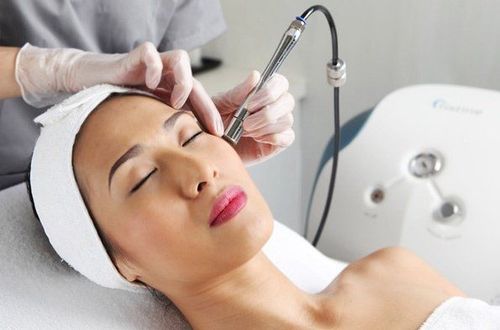
Điều trị tàn nhang bằng laser được nhiều chị em ưa chuộng vì có hiệu quả lâu dài
2.3 Cryosurgery
Cryosurgery uses extreme cold in the form of liquid nitrogen to close with and destroy abnormal skin cells. Cryosurgery is generally safe, requires no anesthesia, and has a quick recovery time. Some potential side effects are hypopigmentation, bleeding, and blistering. Cryosurgery rarely leaves scars.
2.4. Spot bleaching cream
Matting creams also known as bleaching creams, are available over-the-counter and by prescription. Many blemish-fading creams contain hydroquinone, an ingredient that is thought to block melanin production and lighten dark areas. Topical hydroquinone cream can cause unwanted effects such as:
Dermatitis Dry skin Blistering, burning Change in skin color In 1982, the US Food and Drug Administration considered bleaching products containing up to 2% hydroquinone is generally safe and effective. In 2006, hydroquinone was found to be carcinogenic in mice, resulting in tanning and disfigurement. This prompted the FDA to nominate hydroquinone for further study in the National Toxicology Program. Despite this, the FDA recommends that hydroquinone products remain on the market until the NTP study is complete.
MORE: Does the appearance of acne, melasma, freckles, jaundice on the face need to be examined?
2.5 Topical retinoid cream
Retinoid cream is a vitamin A compound used to improve sun damaged skin and lighten freckles. According to a 2014 review, retinoids may protect skin by absorbing UVB ultraviolet radiation. This can help prevent new freckles from forming. Retinoid creams are readily available in the market without a prescription. However, there are still certain side effects such as dryness, irritation, sensitivity,...
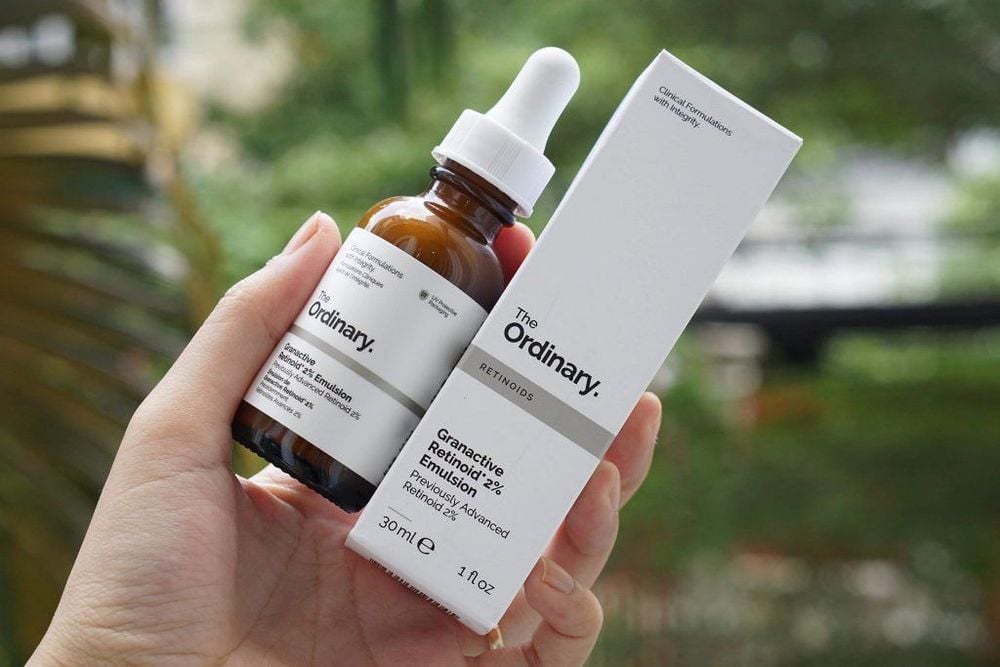
Kem retinoid tại chỗ là một liệu pháp hiệu quả cho da bị tổn thương bởi ánh nắng mặt trời
2.6 Chemical exfoliation
Chemical exfoliants are products that use a chemical solution to exfoliate and slough off dead skin. To remove freckles, a product containing glycolic acid or trichloroacetic acid penetrates the middle layers of the skin, where dead skin cells are removed to make way for new skin cells.
Chemical exfoliants can cause unwanted reactions such as:
Skin rashes Irritation Scaling Swelling According to the American Society of Dermatological Surgeons, exfoliation takes up to two weeks to heal. So you need to clean the skin daily and apply the medicine. You may also need to take prescription antiviral medications for up to two weeks and limit sun exposure until your skin heals.
2.7 Natural remedies
Some natural remedies to remove freckles are used by many people, both safe and can be done at home such as:
Lemon juice: Lemon juice has a lightening effect on the skin. It can be done by using a cotton pad to apply lemon juice directly to the skin, then rinse. Honey: Combine honey with sugar or salt to make a scrub. Honey helps to fade dark spots. Buttermilk: Apply buttermilk directly to the skin and leave it on for 10 minutes before rinsing it off with warm water. You can also create a face mask by combining buttermilk with oatmeal. Avocado milk has lactic acid, which can help lighten your freckles. Sour cream: Like buttermilk, sour cream contains lactic acid, which can be applied directly to the skin and washed off with warm water after a few minutes. Yogurt: Apply yogurt directly to the skin and leave it on for a few minutes. Yogurt also contains lactic acid, which can help lighten your freckles. Onions: Rub the onion on the skin, then rinse the skin in warm water. Onions can act as an exfoliator and lighten dark spots. Freckles are not cancer, but they can be confused with skin cancer. Excessive sun exposure is a risk factor for both freckles and melanoma. Melanoma is more common in people with fair skin or freckles than in people with dark skin. If you notice changes in the size, color or shape of your freckles, see a dermatologist for advice and remedies.
Freckles are one of the common and benign dermatological problems, but many people want to get rid of them for cosmetic reasons. Invasive treatments such as laser therapy and chemical peels are effective, but take a long time to heal and can cause serious side effects. So talk to your dermatologist to determine the best removal method for you. Regardless of which method you choose, it's important to practice safe facials afterward to prevent new freckles from reoccurring.
Please dial HOTLINE for more information or register for an appointment HERE. Download MyVinmec app to make appointments faster and to manage your bookings easily.
Reference source: healthline.com




